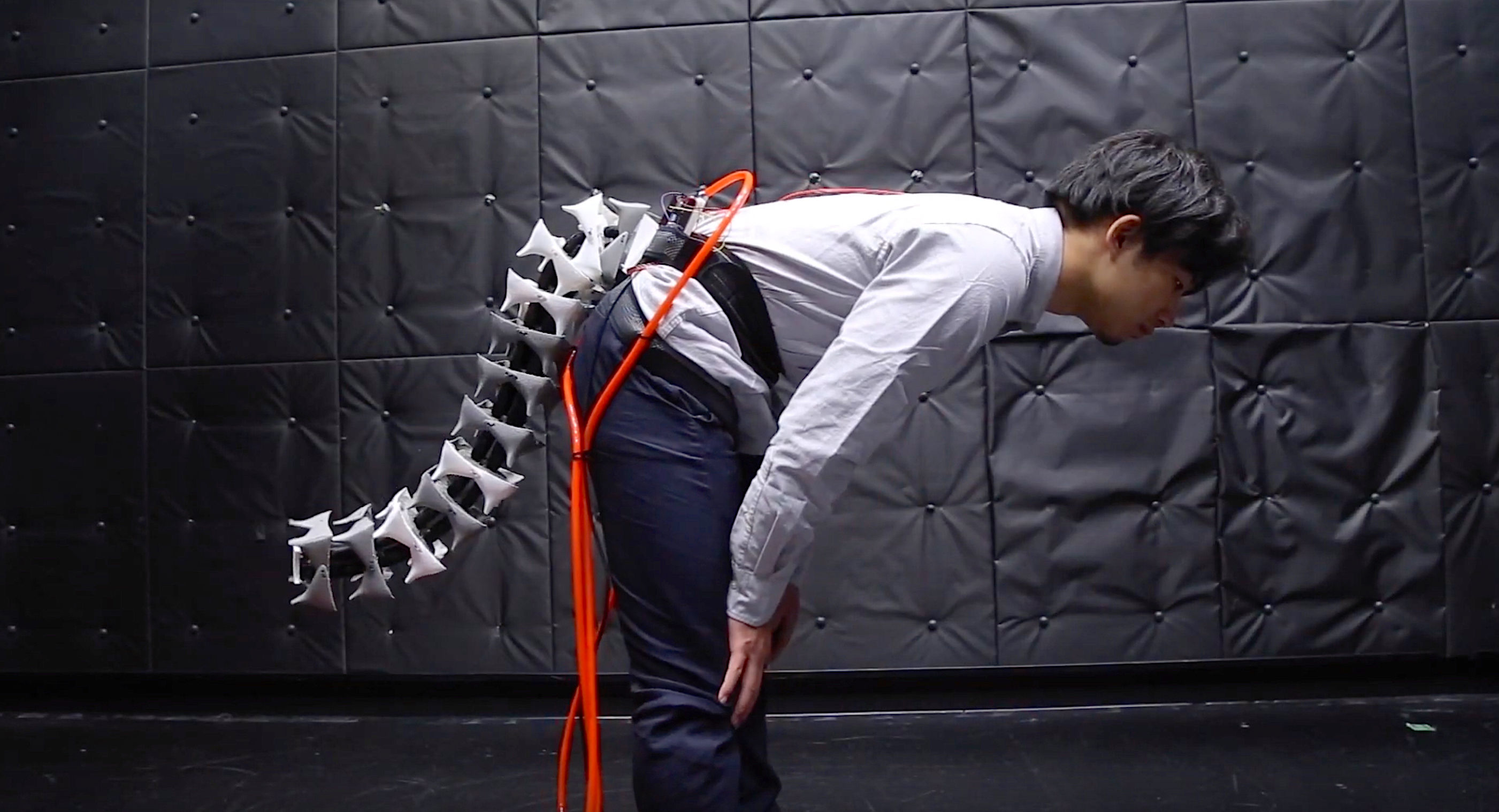Create a free profile to get unlimited access to exclusive videos, sweepstakes, and more!
People can’t grow tails, so robot designers went ahead and made one

We’d probably be thrown a little off balance if we caught a glimpse of someone walking down the street with a fully-functioning tail — but it's comforting to know its owner would be balancing just fine... and looking like an Alien terror while doing it. Yes, thanks to a new, surprisingly usable rear appendage courtesy of the design world, we might someday get the chance to get bionic with our backsides.
Some serious robotics tinkerers at Japan’s Keio University Graduate School of Media Design have created the Arque — a working prototype of a usable, articulating tail meant for people; one that looks a whole lot like a plastic-segmented, Alien-esque, Xenomorphic spine. With function in mind, instead of costume aesthetics, the goal of creating the tail for humans is to extend, with a wearable tool, the limits of our evolutionary capabilities, the team explains over at its YouTube page.
Check out the demonstration below, which features a basic-length version with four artificial “muscles” (though the team notes that additional vertebral sections can be custom-added, depending on your tail-y needs):
If you wondered just why anyone would need a working tail in the first place, the Arque team has your answer: “[T]o provide active momentum alteration in balancing situations, or as a device to alter body momentum for full-body haptic feedback scenarios.”In other words, to help you keep your balance in precarious, slow-moving situations in which the upper body, along with any added weight it might be carrying, moves your center of gravity — or (and we see you snickering over there), when you just want some haptic rear-end sensory input for that super-immersive VR scenario.
Xenomorphic or not, the real biological inspiration for the tail came from the seahorse, which Arque describes as an ideal model, since it’s “feasible to design and [can] handle [a] high amount of forces compared to the body’s size.” The device is capable of estimating real-time changes in the body’s weight distribution, and then compensates on the fly, thanks to an onboard sensor.
While the prototype version must be hooked up to an air compressor and powered by pneumatic tubes, the team hopes to refine the whole apparatus to eventually bring a more compact, self-contained version into reality. Until then, we’ll just have to keep on getting our Alien costumes at the same old cosplay store.


























